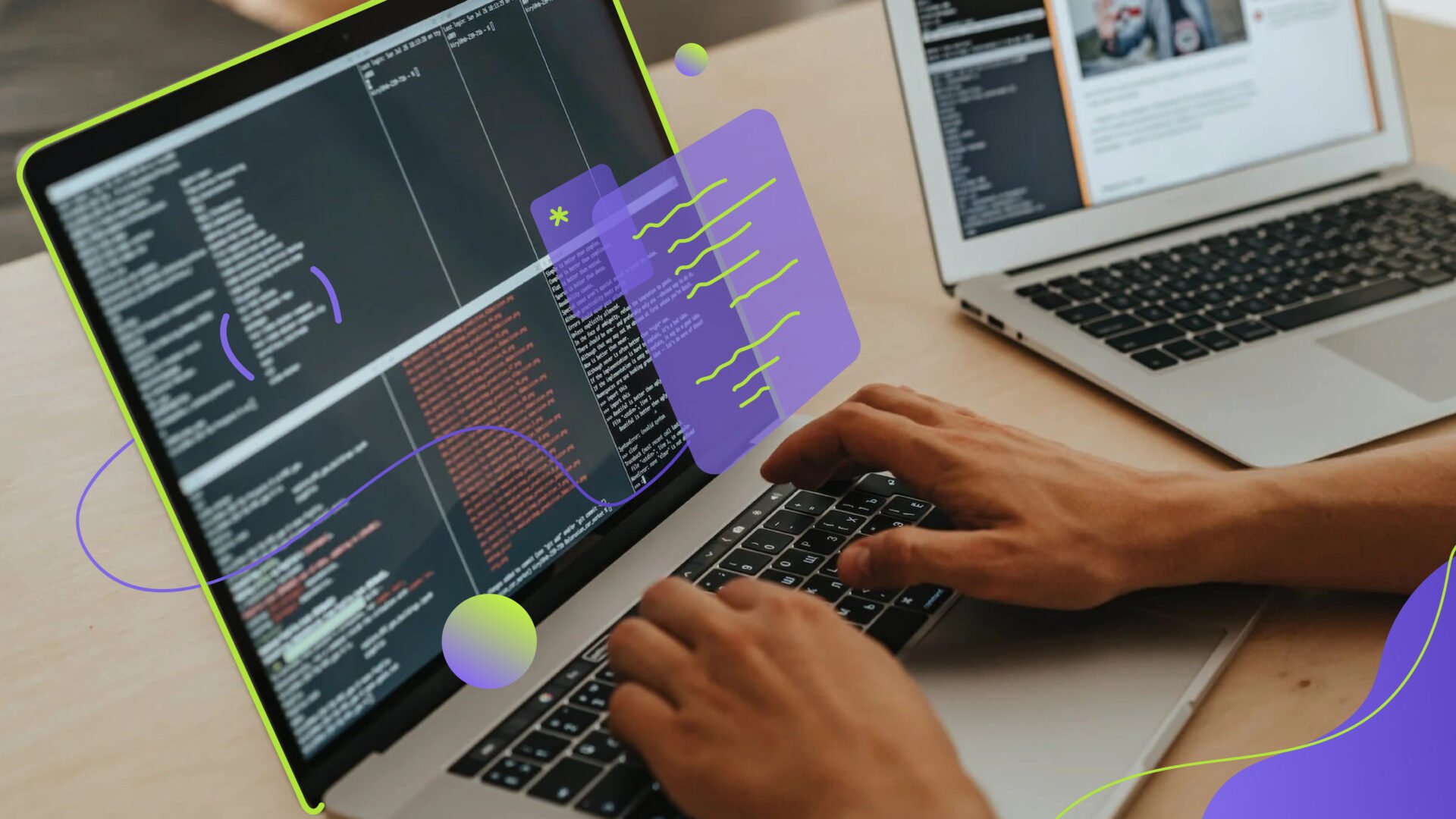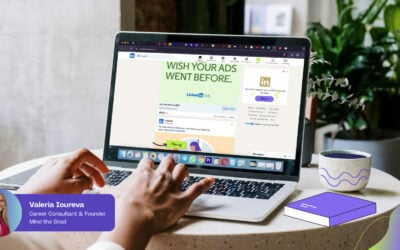
The year 2023 is nearing its end, and with 2024 around the corner, you might be thinking about the future of creative work. As a creative, building a thriving career goes beyond raw talent and that remains true today. The major changes we face are the tools we work with and what is required of us in our individual roles. It’s undeniable that there are some concerns about the usage of Artificial Intelligence (AI) in creative works—and even more so on the ethical front—but the most persistent worry is “will creative jobs survive the AI revolution?”
Let’s talk about it.
The world as we know it
In our day-to-day lives, technology isn’t just a side note; it’s at the heart of work. For creatives, AI, automation, and virtual reality have become integral to the creative process—for better or worse. For instance, AI can analyse trends, helping writers tailor content, while virtual reality opens new dimensions for visual artists to conquer. So, understanding these tools and their implications is crucial for navigating the modern creative landscape.
If we explore further, we can see how technology is not just an accessory. Historically, technology has been a dynamic force that shapes and reshapes the very essence of creativity. We can look to the history of digital art as an example.
There is no surefire way to protect your role from erasure, but the thing is, humans are far more versatile than we give ourselves credit for. In human history, every time we faced a technological revolution, there were job roles—and entire industries—that died out, but several new roles and industries sprang from it when the dust settled. The interim period, between the implementation of the technology and the rise of new opportunities, is the hard part.
Today, many creatives are experiencing unprecedented changes in their respective fields—and are uncertain about whether their role will continue to exist, but here’s the thing. At this very moment, there are tons of people working in roles that didn’t exist maybe a decade ago—and flourishing.
That’s something Ben Youatt, Department Head for Podcasts at Immediate Media, could tell you more about.
“Around 10-15 years ago, you’d be hard-pressed to find my current role—having a Head of Podcast position at a major UK publisher. The BBC were doing quite a lot around podcasting, various radio stations were looking at podcasting, but it certainly wasn’t as mainstream as it is now,” said Ben.
Podcasting is still evolving as a medium and so is the technology around it.
“The demand has been there for a little while, but it is becoming more and more mainstream and audiences are continuing to grow. A lot of the technology that goes around the medium hasn’t really caught up with itself yet—specifically the technology around data tracking, audience tracking, understanding who users are, where they’re listening, why they’re listening,” Ben explained.
As podcasting is still in its nascency, we can safely say that it has potential to grow further as a relatively accessible and easy-to-consume medium for long-form content. People can listen to podcasts on the go or watch the podcast videos with subtitles on platforms like Youtube.
Podcasts have its benefits and its disadvantages—as do all media—but it emerged as a medium that catered to the needs of the public today, and so we saw a sharp hike in podcast consumption over the recent years. It’s fair to assume that where something more traditional, like a newspaper opinion column, may fail, a podcast episode on current events might succeed.
So, what sort of future are we looking at?
The “age of AI”?
Not too long ago, AI was a distant concept but now, more and more people utilise it—AI is now a collaborator in the creative journey. The reasoning thus far has been that the vast datasets utilised by AI can help writers dissect trends, enabling them to better tailor content that resonates with the zeitgeist. (We’ll get into that soon!)
This symbiosis of human creativity and AI-driven insights ensures that creative outputs are not just imaginative but also responsive to the ever-shifting preferences of audiences.
Another important point to note is that automation has evolved from being a simple time-saving tool to a creative companion. For graphic designers, video editors, and other visual artists, automation streamlines repetitive tasks, allowing them to focus on the more intricate aspects of their craft. Imagine a world where routine formatting, file conversions, and other repetitive chores are seamlessly handled by technology, freeing up creative minds for what they do best—innovate.
Virtual reality (VR) stands as a testament to technology’s transformative role. VR isn’t confined to gaming; it’s a canvas for artists to explore new dimensions, as mentioned earlier. This means that visual artists can immerse themselves in virtual spaces, sculpting, painting, and creating in ways that extend beyond the limitations of the physical world. Understanding and embracing these tools empower creative professionals to push the boundaries of what’s possible.
In navigating this modern creative landscape, the key is not just to acknowledge these technological tools but to actively integrate them into the creative process. It’s about recognising the synergy between human intuition and the analytical prowess of AI, leveraging automation for efficiency, and embracing the expansive possibilities offered by virtual reality. This understanding becomes the cornerstone for creative professionals seeking not only to survive but to thrive in the tech-driven landscape of 2024—but this doesn’t mean that challenges don’t exist.
The issues we’re facing
The world of AI on the internet poses a significant challenge for creatives, introducing complexities that need careful consideration. AI models, often trained on the works of artists and writers, should ideally benefit the original creators. However, reality often sees AI-generated content freely circulating without proper acknowledgment or compensation for the creatives behind the original pieces. This raises important ethical questions about how we control and fairly use creative content in this AI-driven era.
Going forward, one of the primary challenges creatives will face is the absence of clear legal guidelines to tackle issues stemming from AI-generated content—there is little to no precedence to refer to, so it’s a massive grey area.
The laws we have in place struggle to keep up with the rapid pace of technological change. The murky waters of ownership and usage rights demand a closer examination of legal frameworks to ensure that artists and writers receive the credit and compensation they deserve for their contributions.
In navigating the technological wave, finding a delicate balance is crucial. While technology offers exciting opportunities, it also presents challenges that need thoughtful solutions. For creatives, these challenges include ensuring proper attribution, fair compensation, and establishing legal frameworks that protect their rights. Addressing these struggles is not just about adapting to the digital age; it’s about creating a sustainable and ethical environment that nurtures and respects the creative contributions of individuals.
What is required of creatives now?
Thriving in the creative landscape of 2024 will require an ongoing commitment to skill evolution. Beyond mastering traditional techniques, creative professionals must become fluent in the language of contemporary technology. Staying current with the latest creative software is akin to an artist selecting the finest brushes – it’s a choice that defines the quality of their work.
It sounds almost unfair, when you look at it from one angle, but here’s some insight that would put things in perspective. Ben believes that technological change will always have an impact on existing industries.
“That’s never going to stop. It’s always going to push further and further. And sometimes there’s a winter—a tech winter—where new advancements slow down and then there’s a breakthrough, and then there’s a new watershed. Suddenly, there’s a lot of momentum and that’s what we see now.”
But what has specifically changed to cause so much concern all at once?
“For the first time in a very long while, it’s not just blue collar workers that are suddenly impacted by industrial change or technological change. Suddenly, the robots are coming for the high-paying, highly creative roles. I think that’s putting a lot of people under pressure in a way that they didn’t expect,” Ben added.
A lot of people are still on the fence about AI but looking at it from the employer’s point of view is enlightening.
“As a culture, creatively, not just through media but more generally, businesses that learn to adapt and use it (AI) as a tool—not as a way to replace an individual, but as a way to empower an individual to be more efficient, to create more or better quality content … will see the benefit in six months time or in five years time and so on.”
He added: “Anyone who doesn’t take the time to learn it—anyone who has a bit of resistance towards it, pushes back, doesn’t think it’s for them, as an individual, I think you’ll be at a disadvantage in the job pool. If you’re a business and you have two applicants applying for the same job, and there’s one person who knows how to use AI effectively, and someone who refuses to use AI, it gives one candidate a clear edge.”
Basically, a business would want the most efficient staff possible—someone who’s willing to adapt and learn new skills. But there is another positive twist to this, as Ben explains.
“This is a real leveller. It doesn’t matter if you’ve been a creative professional for 25 years or 25 minutes at this point. All of these technologies are brand-new. You can make a name for yourself if you learn how to use them now. Everyone’s on a level peg. I think it’s a really interesting time and I think the businesses that learn to adapt to it and embrace it will see the benefit.”
This is also true for individuals looking to start their creative journey. Understanding the basics of these technologies becomes a new layer to this artistic palette, allowing creatives to collaborate seamlessly with algorithms and infuse their work with data-driven insights.
Moreover, navigating virtual environments is not merely a technical skill; it’s a doorway to new realms of creative exploration. Virtual spaces are the canvases of the future, and artists adept at navigating these environments can bring their visions to life in ways previously unimaginable.
Plus, it’s important to remember that continuous upskilling is not just about maintaining relevance; it’s about a proactive embrace of the transformative tools shaping the creative landscape. It’s a commitment to lifelong learning, recognising that the evolution of one’s skills is a continuous journey rather than a destination.
Tomorrow’s most successful creative professionals won’t just be masters of their craft; they will be agile learners, ready to take on the ever-evolving intersection of creativity and technology like tomorrow isn’t promised. Rather than being observers of technological advancements, actively seek collaboration with these tools—find liberation in automation rather than allow it to consume the space meant for you. Allow it to take on mundane tasks that once consumed your precious creative time. This fusion is not a compromise but a symphony, where technology harmonises with human creativity, enhancing the overall creative output.
Becoming your own brand
Here’s another thing you may have missed: the most important thing you bring to any company is your uniqueness. Your unique ideas, your lived experiences—your ability to create a solution to a new problem that has never existed before. (The ability to START new problems won’t be appreciated though, I’m sorry to say.)
You can essentially become your own brand and stand out no matter what—and being a creative means you already have the necessary tools at hand to do this.
Your online presence isn’t merely a showcase—it’s a dynamic narrative that defines your digital identity. Social media platforms are more than channels for self-promotion; they’re strategic platforms for engagement. Utilise them to share not only your finished creations but also the behind-the-scenes moments that shape your creative process. It’s about fostering connections and building a community around your work. It‘s a curated space that reflects your unique brand, as from the colour scheme to the layout, every element communicates a part of your creative story. This digital hub becomes the go-to destination for those seeking to understand your journey, your style, and your artistic philosophy.
And build your network!
Networking is extremely helpful, both in your personal and professional life! Go to virtual and in-person events and collaborate in online projects. These can help you expand your reach but also position you within a global creative dialogue. You’ll have access to diverse audiences, breaking down geographical barriers and fostering connections with fellow creatives.
Platforms like LinkedIn, Behance, and Instagram are not just tools but gateways to a vast network of peers, potential collaborators, and industry influencers. Actively engaging in discussions within these spaces not only amplifies your voice but also positions you at the forefront of industry conversations.
Building a robust digital network is more than an exercise in visibility; it’s a strategic move that opens doors to collaborative ventures. As creative careers unfold beyond geographical boundaries, these digital relationships become catalysts for international collaborations, providing access to diverse perspectives and a global audience.
Today, networking transcends the exchange of business cards; it’s about cultivating meaningful online relationships that have the power to shape the trajectory of creative careers. Digital connections, fostered with intent and authenticity, have the potential to propel creative professionals into new realms of opportunity and innovation. In this era, building bridges in the digital space isn’t just an option; it’s a necessity for those aiming to thrive in the interconnected world of creative pursuits.
In essence, it’s about weaving a narrative that resonates, engages, and continuously evolves, reflecting the spirit of your creative journey in the digital age.
Stay ahead of trends
Creativity is not a static concept; it’s a dynamic response to the ever-shifting currents of trends and innovations. Staying ahead requires a vigilant eye on emerging technologies, consumer behaviours, and industry trends. To be a forward-thinking creative professional means more than merely observing trends; it involves active engagement with the evolving landscape. Attend virtual conferences where industry leaders and innovators converge to share insights and predictions. Engage with online trend analyses to decipher patterns and anticipate the next wave of creative influences.
Curiosity becomes the compass guiding creative professionals through this continuous journey of innovation. Embrace the unknown, experiment with new techniques, and be open to unconventional ideas. The ability to adapt doesn’t just keep creative work relevant; it positions the artist as a pioneer, shaping the trends rather than merely following them.
In essence, the creative professional of 2024 is not just a responder to trends; they are an active participant in the ongoing narrative of creative evolution. It’s a commitment to staying curious, being proactive in seeking knowledge, and engaging with the pulse of the industry to ensure that creative work not only remains relevant but also contributes to shaping the future of creativity.
So, will creative jobs survive?
The answer is a resounding “Yes!”
Firstly, creativity is a deeply ingrained human trait that goes beyond the capabilities of artificial intelligence. While AI can assist and augment creative processes, the depth of emotional connection, nuanced interpretation, and originality that humans bring to creative work is unparalleled. Creative jobs, therefore, tap into a uniquely human aspect that technology struggles to replicate.
Creative industries have historically showcased a remarkable capacity to adapt to technological shifts. Just as machinery replaced certain jobs during the Industrial Revolution, it simultaneously gave rise to new job roles.
For instance, the advent of the printing press, rather than eliminating writers, gave rise to an explosion in literature. Similarly, the introduction of radio, television, and the internet didn’t replace but rather transformed how we consume and create content. Creative industries thrive on innovation and adaptability.
The transition from agrarian societies to industrial ones led to the emergence of jobs in manufacturing, maintenance, and machine operation. Similarly, the AI revolution is expected to generate new roles, particularly in fields that require creative and critical thinking skills.
Technological evolution often results in the creation of entirely new industries. The rise of the internet, for example, birthed entire sectors like digital marketing, web development, and social media management.
Rather than replacing humans, AI could be used to support human capabilities. In creative fields, AI tools can assist with repetitive tasks, allowing creators to focus on higher-order thinking—which is the most important part!
The survival of creative jobs hinges on the inherent qualities that make them distinctly human and the adaptive nature of creative industries. While the AI revolution may reshape certain aspects of work, history and current trends suggest that creativity, innovation, and uniquely human contributions will remain essential components of the evolving job landscape. The key lies in embracing the potential for collaboration between humans and AI, fostering a balance that capitalises on the strengths of both.
The fusion of creativity and technology will bring its fair share of challenges and boons but it’s an invitation to shape a vibrantly creative world that transcends the boundaries of conventional thinking. The creative path is not a predetermined trail but a canvas waiting to be painted, a code waiting to be written, a story waiting to be told, so let’s make it happen.



